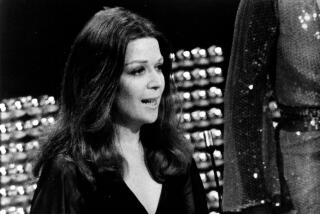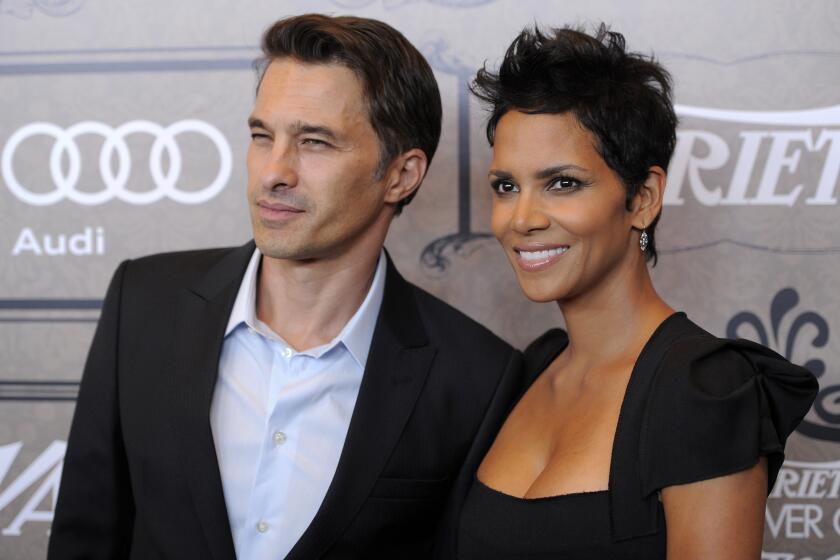‘There’s Something About Mary’ at 20: Its creators and actors share memories of risky scenes (hello, hair gel)
“There’s Something About Mary” is what “Oh no you didn’t” looked like in 1998.
Remember the scene in which Ben Stiller’s private parts — his “franks and beans” — get unzipped in vivid detail? And who can forget the unique gel that made Cameron Diaz’s hair stand up straight when out on a date with Stiller?
The raunchy, hilarious — and surprisingly tender — comedy convulsed audiences and dazzled critics 20 years ago. In 2000, the American Film Institute ranked “Mary” No. 27 on its list of the 100 greatest American comedies, between “Being There” and “Ghostbusters.”
“That’s good company,” beams Bobby Farrelly, who along with his brother Peter co-wrote and directed the film that ushered in a new era of R-rated comedies.
At the time, PG-13 comedies like “Dr. Dolittle” — released that summer two weeks before “Mary” — were more the norm. “There hadn’t been an R-rated comedy in a long time,” Bobby said in a phone interview from Vancouver where he and Peter are filming the TV series “Loudermilk.”
“We wanted to do something more for adults. We weren’t going to hold back. ‘Animal House’ was a movie we loved growing up. The jokes those guys were willing to attempt is what motivated us.”
Bradley Thomas, who co-produced the film, says making “Mary” was “magical, everything about it was just fun.” Markie Post remains proud of her appearance as Mary’s mom, although at the time she thought jokingly that “culture as we know it is over.”
Not that all the Farrelly brothers’ comic inspiration was base instincts. The idea to use off-center singer-songwriter Jonathan Richman as the film’s Greek chorus came from the 1965 western comedy “Cat Ballou,” which featured Stubby Kaye and Nat King Cole as troubadours.
In Hollywood, you’re only as good as your last picture. At the time for the Farrellys, that was the bowling comedy “Kingpin.” Coming after the phenomenal success of their first film, “Dumb & Dumber,” it underwhelmed at the box office (it has since found its audience on home video and is considered a cult favorite). But the Farrellys had a fan at 20th Century Fox in film marketing and distribution executive Tom Sherak.
“He said to bring him the next project we were passionate about,” Bobby recalled. “We warned him we were going to push the envelope, and he gave us our opportunity to make the film we wanted to make.”
“Mary” recaptured “Dumb & Dumber’s” mojo. It earned nearly $370 million worldwide. It paved the way for “American Pie” a year later and films like “The 40-Year-Old Virgin” later on.
Ed Decter and John J. Strauss, friends of the Farrellys, wrote the original script. The general idea was a romantic triangle: A guy still hung up on his high school crush hires a private eye to track her down but the private eye falls for her too. “We thought it was a great idea and a great title,” Farrelly said. “The project had gone into development hell at the studios. When we finished ‘Kingpin,’ we called them up and asked if we could take their idea and run with it. It was a collaboration.”
We wanted to do something more for adults. We weren’t going to hold back.
— Bobby Farrelly
At its core, “Mary” is the sincere love story between Ted (Stiller) and Mary (Diaz), which is complicated by unscrupulous private eye Pat Healy (Matt Dillon), Mary’s confidant (Lee Evans) and several others besotted with Mary. But there are several scenes that make “Animal House” look like, well, “Dr. Dolittle.”
Bobby Farrelly, Lin Shaye (who appeared as Magda, Mary’s ultra-tanned Florida friend and neighbor), Post and Thomas shared their memories of “Mary”-making and how they pulled off some of the film’s riskiest and most memorable moments.
Prom night
None of Ted’s friends believe he is going to the prom with Mary (“What a fox”). But no sooner does he pick her up at her house and he’s in her bathroom with his “franks and beans” caught in his zipper. Almost equally shocking was the appearance of “Night Court’s” Post as Mary’s mother, in a situation and using language way out of character for America’s Sweetheart. Which, she states, is why the Farrellys offered her the role; she didn’t even have to audition.
“They just wanted the shock value,” she said in a phone interview. “I’m easily offended. I had read the script and I thought, ‘I can’t possibly do this movie,’ but I went in to meet them and they were just wonderful. Of course, I did it and I’m very glad I did, but my first impression was, ‘I can’t even let my parents see this,’ which they never did.”
The Farrellys could have left Ted’s predicament to the imagination, but to “amplify his embarrassment,” they inserted a close-up of the exposed “beans.” A 4-feet-by-2-feet mock-up was produced. When it was brought on the set, the crew asked, ‘You’re not going to show it, are you?’ Farrelly recalled. “We gave it a try and the audience reaction was as good as we could have hoped. Peter Chernin, then the head at Fox, saw the film with an audience. We thought he might ask us to try a screening without the close-up. He said, ‘It’s perfectly reprehensible; don’t touch a thing.’ And that was that.”
“Is that hair gel?”
“Pete had a seed of an idea, literally, and we just ran with it,” Farrelly joked of “Mary’s” most notorious scene, which Variety noted, “instantly takes its place in the annals of side-splitting gross-out comedy.” What Farrelly remembers most about how the scene came together is choosing the, shall we say, residue sample to affix to Stiller’s ear. “There were 20 of them in a briefcase, all different,” Farrelly said. “Each one had its own personality. The prop guy said, ‘You pick one.’”
The tricky bit was convincing Diaz, who rubs the offending fluid into her own hair for the instantly classic sight gag, that the scene would be funny and not just gross, and would not sabotage her budding career. “As we do with every movie, we ask the actors upfront if they are cool with everything,” Farrelly said. “It could have been a career-defining moment and we didn’t want to strong-arm her into doing it. We said, ‘Cameron, if the audience is going, “Eww,’ we’ll take it out. We let her decide. When we tested the movie and she saw the audience laughing, she said, ‘OK, I’m cool.’”
Magda and Puffy
Not scripted, one of “Mary’s” comic grace notes occurs between Shaye and her canine costar, Slammer, who portrays Puffy. Shaye devotes lavish attention on her dog — who returns the favor and then some.
“That scene was the first scene of the day, Shaye said in a phone interview. “It was 7:30 in the morning, which means I had to get into makeup four hours earlier. We started the scene and Pete came out and says, ‘Come on guys, let’s get this cooking.’ To elevate the energy, I picked up Slammer and held him up in the air above me. And the dog just started kissing me. My job was to stay in the scene so I stuck with it. When Pete yelled cut, he called it a fantastic moment. Slammer did love me; he would come look at me, look at his trainer, and then crawl over into my lap.”
Like many scenes in the movie, watching Puffy madly lick Magda’s face is gross, hilarious and sweet all at the same time.
“To her credit, she just played it like it’s something they do all the time,” Farrelly said. “She’s that actress who just commits. She makes [her scenes] better than we envisioned them. She figures out a way to take it to the next level.”
“Buttercup”
Most comedies want to leave their audiences laughing. “Mary” leaves them singing along to the irresistible 1969 Foundations hit, “Build Me Up Buttercup.” “You want the audience walking out of the theater on a high note,” Farrelly said. “It’s easier said than done. I think it was Pete’s idea to put a fun song at the end. ‘Buttercup’ was one of his favorite songs from our childhood. It puts everyone in a good mood. It’s got that ‘Sweet Caroline’ feel to it. When people in a bar hear it, they say, ‘Oh, I love that song.’”
At the end of each shooting day, Thomas recalled, boom boxes on the set played ‘Buttercup’ and they filmed as the characters sang and danced a few verses of the song. “That’s how the days would end, singing ‘Buttercup.’ What’s better than that?”
The inevitable question: sequel? “What would it be?” Farrelly asked rhetorically. “We tossed it around a little but that was a movie we just wanted to play by itself. But now, Pete and I are trying to adapt it into a Broadway musical. … There’s a couple of moments we have to figure out how to do onstage. That’s been our challenge.”
Shaye still gets, “Oh my God, it’s that woman,” from people who recognize her from her Farrelly films (she’s been in five). “ ‘Mary’s’ on [TV] often,” she said. “People who watch it for the first time love it and people who have seen it watch it over and over. I’m just grateful to be a part of it.”
More to Read
Only good movies
Get the Indie Focus newsletter, Mark Olsen's weekly guide to the world of cinema.
You may occasionally receive promotional content from the Los Angeles Times.










